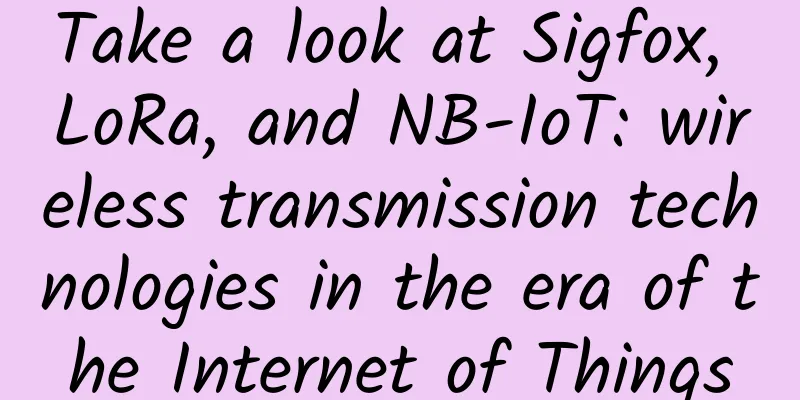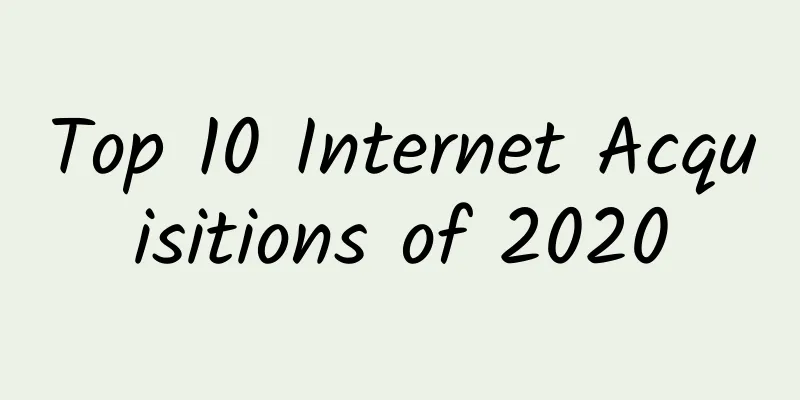Take a look at Sigfox, LoRa, and NB-IoT: wireless transmission technologies in the era of the Internet of Things

|
Wireless communication technology is the transmission basis of the Internet of Things. As smart city applications become a hot development, various technologies are emerging and competing to seize the Internet of Things market. Among LPWAN technologies, the most popular ones are LoRa, Sigfox and NB-IoT. In the trend of the Internet of Things, what are the advantages of these three technologies? Which one will be your best partner in your professional field? People in related industries must be familiar with the terms Internet of Things, big data, and artificial intelligence (AI). In the technical architecture of the Internet of Things, "sensing" is the most basic core source. Whether in agriculture, industry, construction, transportation, or medical fields, in order to analyze the sensed data through AI and then form related applications, it is necessary to first deploy appropriate transmission technologies and domains to collect and report massive amounts of environmental data.
In wireless communication technology, WI-FI, bluetooth, ZigBee, and Z-Wave, which were introduced earlier, have laid a foundation for development in different fields. WI-FI is suitable for the transmission of large amounts of data, such as audio and video transmission or AR/VR, and is also the basis of general wireless networks. Its disadvantage is that it consumes a lot of power. Bluetooth is mostly used in personal wearable devices and is more mature in the field of sound. ZigBee and Z-Wave have achieved fruitful results in automatic control applications in industry, construction, etc. Long distance + power saving features, LPWAN solves the transmission problem of IoT When it comes to wireless networks, in addition to WI-FI, the first thing that comes to mind is probably the mobile communication network of mobile phones. Today's communication technology is about to enter 5G, which emphasizes larger bandwidth, higher speed, lower latency, and of course more power consumption. Since it corresponds to communication between people, data transmission is more intensive and the exchange volume is also larger. For M2M communication, since the deployment range of devices is usually wider and wireless devices must avoid frequent battery replacement, LPWAN (Low Power Wide Area Network) technology has emerged. Its small data volume, long-distance transmission and power saving characteristics have made it shine in the field of Internet of Things applications. Earlier wireless transmission technologies, such as WI-FI, ZigBee and Z-Wave, have a communication transmission distance of only 100 meters at most. To be used in the field of smart homes, antennas or relay stations with signal enhancement must be installed. If you want to meet the relevant applications of smart cities, such as environmental monitoring or asset tracking, LPWAN technology with a transmission distance of up to 20 kilometers can obviously greatly reduce the deployment cost. Only a few stations can cover a large area; using batteries as a power source omits the wiring problem, making the installation steps of sensors easier. The most popular LPWAN technologies are LoRa, Sigfox and NB-IoT. These three technologies have their own advantages. Owners can choose the most suitable communication technology according to different fields and usage needs. Low energy consumption, high transmission range: LoRa and Sigfox compete Just like the technical features of LPWAN, LoRa and Sigfox both have the characteristics of long distance and low power consumption, which can extend battery life and form a large-scale information transmission. Both use the unlicensed Sub-1GHz ISM band, without paying additional licensing fees, and due to breakthroughs in electronic chip manufacturing technology, the hardware manufacturing costs of the two technologies are constantly decreasing. For example, Sigfox, which was already used in the industry in Taiwan last year, has a monthly rental fee of only RMB 0.4. LoRaWAN is a network standard jointly promoted by various industry alliances. It provides open technology. As long as the key content is obtained, individual applications can be developed. Unlike the openness of LoRa, Sigfox is a technology developed by a French company of the same name. It controls the operation and deployment of the core network and intends to deploy network bases around the world as an independent operator. Currently, it can use connected domains and devices in 36 countries and regions at the same time. In terms of type, LoRa is like a small private domain with a transmission distance of up to 20 kilometers. As long as the technology is mastered, base stations can be set up by yourself, which has a higher degree of freedom. Sigfox aims to operate globally and continuously expand its network base. It can provide users with existing network deployment and cloud services. It requires an additional monthly fee, which is more expensive than LoRa, but the platform solution is complete and does not require additional network deployment. Sigfox's transmission distance can reach 50 kilometers, which is the widest range among the three technologies. However, in order to achieve the goal of low power consumption, LoRa and Sigfox have a daily transmission limit. The transmission time in a day is very short, which is suitable for areas without real-time communication needs. For example, sensors that report fixed data every day can measure specific environmental data such as temperature, humidity, PM2.5, etc., and form a larger area of IoT applications through long-distance and low-frequency transmission. Telecom operators strongly promote: NB-IoT Another technology that is hotly discussed in the IoT industry chain is NB-IoT. The biggest difference from the above two technologies is that it is a technology developed by the 3GPP organization and uses the GSM and LTE frequency bands that require authorization. In other words, NB-IoT must purchase frequency band authorization through the telecommunications industry. Users can only use NB-IoT related services by obtaining authorized technology and frequency bands through telecommunications operators or third-party agents. The advantage of NB-IoT is that it is a technology launched by existing telecommunications operators. There is no need to re-build the network. As long as the software is updated, the existing 4G telecommunications base stations and related equipment can be used. On the other hand, the use of telecommunications-grade networks has a high degree of guarantee in terms of communication quality and information security. Far EasTone Telecommunications in Taiwan has currently launched a pre-experience activity for NB-IoT and is expected to complete the upgrade of bases across Taiwan by the end of May. As long as Far EasTone Telecommunications can receive signals, NB-IoT can be used. The monthly rental fee for the device is about RMB 2 to 12. "Putting the right technology in the right place" - Wireless communication technology application The above three popular LPWAN technologies each have different characteristics. The industry predicts that one of them will surpass the others and become the only one in the future. However, as Olivier Hersent, one of the founders of LoRa, once said, a cooperative coexistence is more likely to lead future technologies to new developments. In fact, there are hundreds of IoT application fields, and the characteristics of these three technologies also correspond to the special needs of different fields. For example, NB-IoT, user license bands and LTE technology, their networks do not limit the number of message transmissions, and the amount of data they can carry is also higher. Therefore, they are suitable for smart industrial fields that value network transmission stability and real-time performance, or IoT devices that require high data transmission such as sound and image files. Relatively speaking, the power consumption of NB-IoT is also higher than the other two technologies, and the battery life loss is greater. At the same time, the collaboration model with telecom operators will be faster and easier when promoting to users. From another perspective, it is also limited by hardware costs (chips) and monthly rental costs. Compared with NB-IoT, LoRa and Sigfox are more suitable for small data volume and large-scale transmission applications due to their low hardware cost and lower power consumption. The current development scale of LoRa technology has become mature, and it has cooperated with Asia Pacific Telecom and Foxconn Fuhong Network, and has achieved actual operational results in Taiwan. Although the transmission distance is not as good as Sigfox, the transmission bandwidth is higher, the construction cost and technical difficulty are not high, and it is suitable for building closed domains in high-tech factories to transmit various types of sensor data. From the perspective of global deployment, Yu Kaiqun, manager of information and communication technology at Rheinland, said that Sigfox is a very promising technology. Since Sigfox provides global network services, it is more convenient for multinational companies, especially the all-in-one network solution, which provides complete and stable cloud services for high-profit companies, saving a lot of trouble in development and collaboration. Sigfox has the longest transmission distance, but the least number of transmissions per day, so it is suitable for scenarios that reflect data changes or transmit data at fixed time periods, such as pipeline monitoring, smart meters, regional climate monitoring and alarms. Sigfox is currently working with O-bike in Taiwan to provide location tracking services, as well as equipment status detection for ZTE Security, and smart medical remote care applications. As it is a multinational application, Sigfox also cooperates with American express companies to install sensors on packages. In addition to knowing the delivery location of the package, it can also detect the time of unpacking and transmit specific data back to the United States. Future vision of IoT: information security and technology verification are indispensable Emerging technologies bring more convenience and a better vision of the future, but also bring concerns about security. When various information circulates on the Internet, once network security problems occur, personal privacy may be leaked and even affect personal safety. In Europe, which attaches great importance to privacy rights, the General Data Protection Regulation (GDPR) has been passed, which strictly regulates the restrictions and management of personal data collection by Internet companies. Although information security issues have not yet attracted full attention in Taiwan, with the expansion of IoT devices and fields, general users will also be more frequently exposed to related issues. Network security will definitely become one of the service solutions that product/software suppliers need to propose. He Shaopeng, senior manager of Rheinland, also reminded that all wireless communication technologies must pass national regulations and alliance certification standards. First of all, the frequency and power of wireless communication must be controlled by the laws of various countries so that the products have qualified communication standards and will not affect other electronic equipment or human health due to the need to enhance communication. Then, the standards of various technical alliances must be passed, including electromagnetic wave types, communication protocols and interconnectivity tests, to ensure that products using the same type of communication technology can communicate with each other. Just like the smart home gateways currently on the market, most of them will accommodate 1 to 3 types of communication technologies (such as WI-FI, Bluetooth, ZigBee, etc.), and the interconnectivity and anti-interference of the products are even more important. Perhaps in the near future, different wireless network communication technologies such as LoRa or NB-IoT will be integrated into a single IoT module. For example, in remote factories, LoRa will be used to form data transmission between devices in the local area network, and then the data will be transmitted to the external LTE network to integrate data from multiple factories for overall analysis. Whether in the fields of transportation, industry, agriculture, construction, medical care, finance, etc., the IoT will focus on emerging applications under data. Device networking is only the foundation. Only by making good use of software services and grasping application opportunities can the true wisdom of the IoT be realized. |
>>: How are 5G standards formulated? What is the voice of Chinese companies?
Recommend
Can you really explain TCP's three-way handshake and four-way handshake?
What is TCP Before understanding the three-way ha...
What will happen to 5G base stations if power is cut off? Can operators handle the performance?
Power outages are happening all over the country,...
Interrupt or poll? It's so troublesome to get a data packet!
New employees in the network department My name i...
When Wi-Fi becomes a “basic need”, what should five-star hotels do?
Will the "joker" break your cognitive b...
Let’s talk about HTTP pipelining
HTTP pipelining is a technique for sending multip...
Fortinet once again ranked as a Visionary in the Gartner Magic Quadrant for Enterprise Wired and Wireless LAN Infrastructure for the third consecutive year
Fortinet recently announced that it has been name...
Linveo: $15/year-AMD Ryzen/1GB/25G NVMe/2TB/Ottoville
This is the first time that Linveo has appeared o...
How to promote 5G packages in small and medium-sized cities
From the perspective of package value, the curren...
Five packet sniffers that can replace Wireshark
Wireshark is a very popular packet sniffer. It ca...
Have you learned how to configure multiple public IP addresses?
background For some customers working on video an...
LisaHost newly launches Hong Kong native IP triple-network CMI backhaul, streaming media unlocks large bandwidth starting from 88 yuan/month
Lisahost has launched a new Hong Kong ISP-type na...
Sharktech: 10Gbps unlimited traffic server starting from $259/month, dual E5-2678v3/64G memory/1T NVMe disk/5IPv4/60Gbps defense
Sharktech's special promotion machine this mo...
A brief history of the development of the iSCSI storage protocol
iSCSI stands for Internet Small Computer System I...
A new model for 5G smart factories
In the 5G era, smart factories will greatly impro...
Summary of Operation and Maintenance Experienced Drivers: 150 Commonly Used Commands
When it comes to operation and maintenance, every...






![[Security Alert] Baota Panel suspected vulnerability or Nginx abnormality](/upload/images/67cabfe7c791c.webp)


